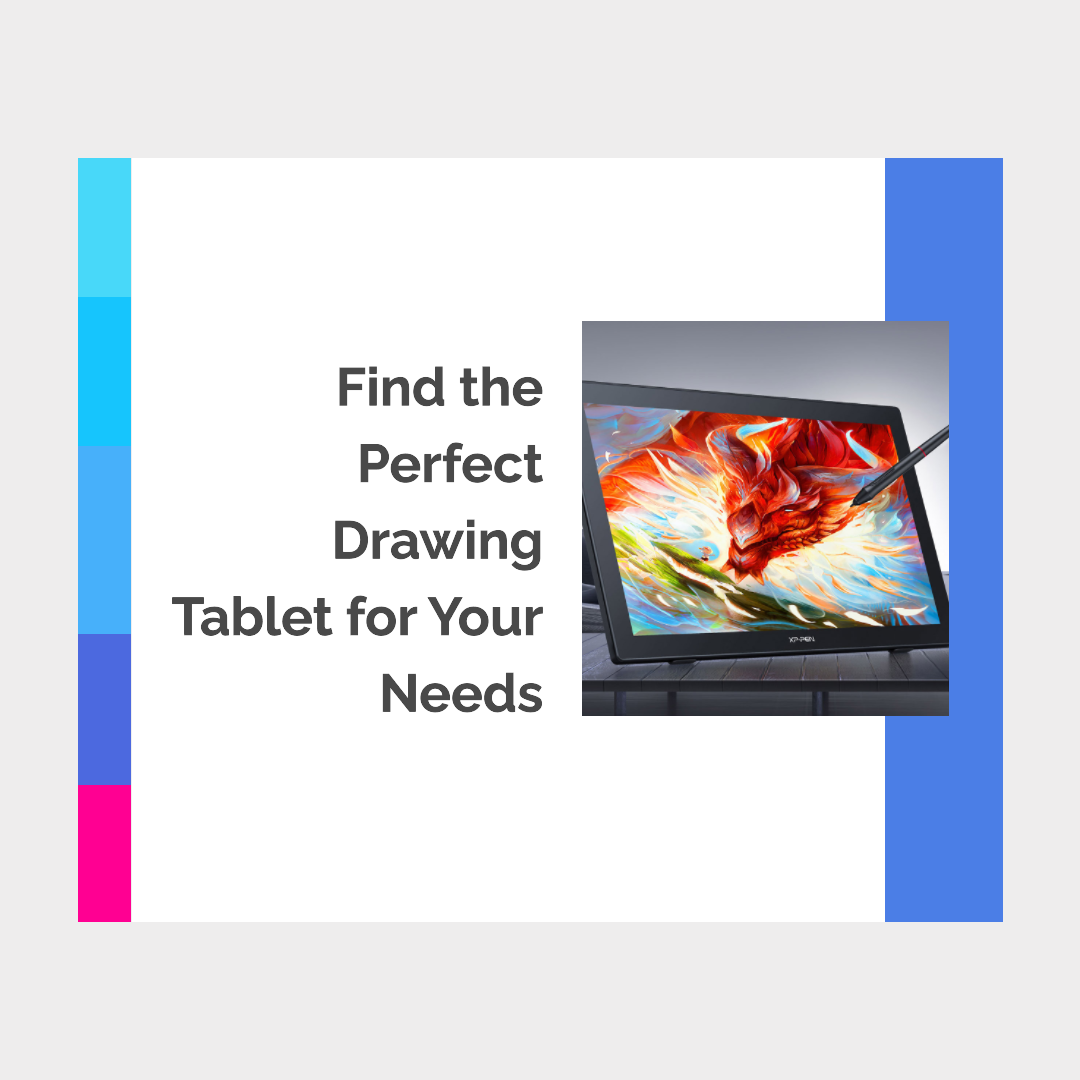In today's digital age, artistic expression has evolved, and drawing tablets have become indispensable tools for both professional artists and hobbyists. With numerous brands and models flooding the market, finding the ideal drawing tablet can be a daunting task. In this article, brought to you by XPPen, we'll delve into the factors to consider when choosing a drawing tablet that suits your needs and budget.
- Purpose and Skill Level
The first step in choosing the right drawing tablet is to define your purpose and skill level. Are you a professional digital artist, a beginner looking to explore digital art, or somewhere in between? This distinction will determine the features and specifications you need. Beginners might benefit from a more straightforward and affordable option, while professionals might require advanced features and higher levels of sensitivity.
- Size Matters
Drawing tablets come in various sizes, ranging from compact to large. The size you choose depends on your workspace, preferences, and drawing style. Smaller tablets are more portable, making them suitable for artists on the go. Larger tablets provide a more immersive drawing experience, allowing for more natural strokes and intricate details.
- Pressure Sensitivity and Accuracy
Pressure sensitivity determines how responsive the tablet is to different levels of pressure, replicating the experience of using traditional art tools. Higher pressure sensitivity levels offer finer control over line thickness and shading, resulting in more nuanced artwork. Accuracy is equally important, as it ensures that your strokes accurately translate onto the screen.
- Connectivity and Compatibility
Consider how the drawing tablet connects to your computer. USB and wireless options are common. Wireless tablets offer greater freedom of movement, while wired ones provide a consistent connection. Additionally, ensure the tablet is compatible with your operating system and preferred drawing software.
- Display Type: Pen vs. Screen
One crucial choice is between traditional pen tablets and tablet monitors with built-in screens. Pen tablets require you to look at your computer screen while drawing on the tablet's surface, which can take time to adjust to. Tablet monitors, on the other hand, provide a more intuitive experience by allowing you to draw directly on the screen, like you would with traditional art materials.
- Budget Considerations
Your budget will play a significant role in your decision-making process. Fortunately, the market offers options catering to various price ranges. While premium tablets might offer cutting-edge features, many mid-range tablets deliver excellent performance for both beginners and professionals.
- Brand Reputation and Reviews
Research the brands you're considering and read reviews from other artists. XPPen, for instance, is renowned for producing high-quality drawing tablets that offer exceptional value for money. Reading user experiences can provide insights into real-world usage and potential issues.
Conclusion
Selecting the perfect drawing tablet involves a careful consideration of your artistic goals, skill level, preferences, and budget. With a multitude of options available, take your time to research and compare features. Whether you're a professional artist or a beginner taking your first steps into the world of digital art, XPPen offers a range of drawing tablets designed to empower your creativity and enhance your artistic journey.

